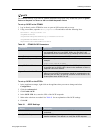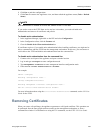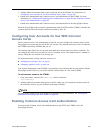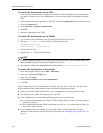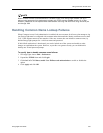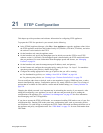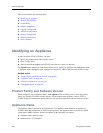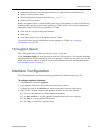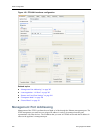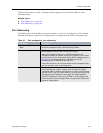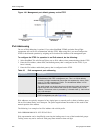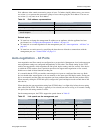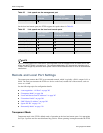
EncrypTight User Guide 299
21 ETEP Configuration
This chapter provides procedures and reference information for configuring ETEP appliances.
To prepare the ETEP for operation in your network, do the following:
● In the ETEMS Appliance Manager, click File > New Appliance to open the Appliance editor. Select
the ETEP appliance model from the Product Family list (ET0010A, ET0100A, ET1000A), and select
the software version loaded on the ETEP.
● On the Interfaces tab, enter the appliance name.
● On the Interfaces tab, specify the throughput speed at which you want the ETEP to run (ETEP
software version 1.6 and later). The throughput speed is determined by the ETEP model and license
that you purchased. For more information about throughput speeds and licenses, see “Managing
Licenses” on page 56.
● On the Interfaces tab, enter the management port IP address, mask, and gateway.
● On the Features tab, configure the encryption policy setting for Layer 2 or Layer 3. For standalone
operation (point-to-point policies), disable EncrypTight.
● Configure the settings appropriate to the type of policies that you will be creating:
● For distributed key policies, see “Adding a New PEP in ETEMS” on page 148
● For point-to-point policies, see “Creating Layer 2 Point-to-Point Policies” on page 335
You can configure other items as desired, such as auto-negotiation, logging, SNMP trap hosts, or other
network interoperability settings. Configuration options vary among software revisions. For a listing of
options that are available for each software version and the default settings, see “Factory Defaults” on
page 339.
Changing the default password is an important step in maintaining the security of your network. After
adding and configuring a new appliance, be sure to add users and passwords prior to pushing the
configuration to the appliance. See “Appliance User Management” on page 102 for more information
about managing users on ETEP appliances.
If you plan to operate the ETEP in FIPS mode, we recommend enabling FIPS mode as one of your first
configuration tasks. Entering FIPS mode resets many configuration items, such as passwords, policies,
and certificates. To avoid having to reconfigure the ETEP, enable FIPS mode and then perform the rest of
the appliance and policy configuration tasks. See “FIPS Mode” on page 331 for more information about
FIPS mode.



